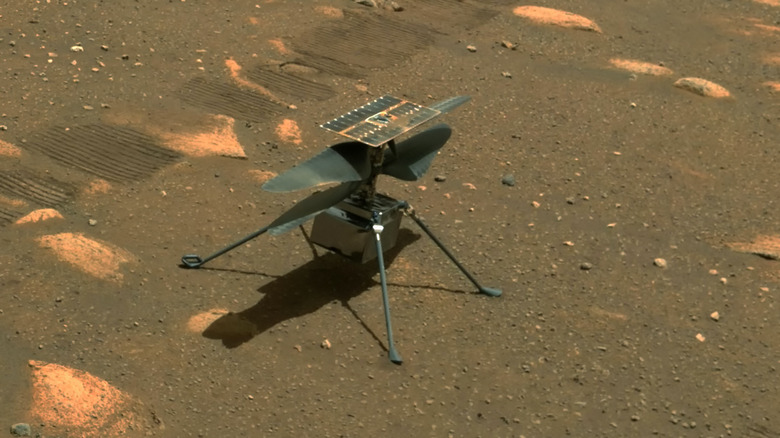Mars Helicopter Ingenuity Will Keep Flying Until September
NASA's Mars helicopter Ingenuity has exceeded all expectations of how long an airborne craft could operate on the red planet. Originally designed to take just five flights, the plucky little helicopter recently took its 21st, and now NASA has confirmed its mission will be extended until September. The helicopter is exploring the Jezero crater, near where it landed along with its companion, the Perseverance rover. Ingenuity had been heading away from Perseverance to explore other parts of the crater, but now it is on a journey back to rejoin the rover so the two can head out to the Jezero delta. Ingenuity will help to scout for the rover, identifying potential routes Perseverance can travel and hopefully helping to speed up its journey.
The fact that Ingenuity is still going is remarkable, given that it is the first helicopter ever to operate on another planet and engineers weren't even sure it would be able to fly. The fact is it has worked better than anyone could have imagined and has proved that it is possible to explore planets in a whole new way — from the air. "Less than a year ago we didn't even know if powered, controlled flight of an aircraft at Mars was possible," said Thomas Zurbuchen, the associate administrator of NASA's Science Mission Directorate (via NASA). "Now, we are looking forward to Ingenuity's involvement in Perseverance's second science campaign. Such a transformation of mindset in such a short period is simply amazing, and one of the most historic in the annals of air and space exploration."
The challenges Ingenuity faces on Mars
Although the Ingenuity helicopter has survived every challenge that Mars has thrown at it so far, the journey hasn't been easy. One big problem came with seasonal changes on the planet. Like Earth, Mars has seasons, and with the changes in seasons come changes in the weather. One particular issue for Ingenuity was dealing with changes in air density. The atmosphere on Mars is extremely thin, at around 1% of the density of the atmosphere on Earth. That makes it harder for a helicopter to operate, as it stays aloft by using its rotors to move air. When that air is thin, it's harder to stay off the ground. It gets some help from Mars' lower gravity, meaning the forces pulling the helicopter down to the ground aren't as strong as they would be on Earth. But in September 2021, Mars' changing atmosphere meant the air density became even lower than it was before, dropping from around 1.2% – 1.5% of Earth's atmospheric density to just 1% (via NASA).
To address this issue, the helicopter had to spin its rotors faster than ever before, and faster even than had been tested on Earth. The high-speed rotor tests were a success, however, and Ingenuity was able to continue flying even with the lower air density.
Another challenge hit the helicopter in the form of a dust storm which blew through the Jezero area in December 2021, covering parts of the helicopter's hardware in dust. But Ingenuity was able to shake off that dust by performing a maneuver called a "servo wiggle" which it performed several times to clear its hardware and keep flying (via NASA).
